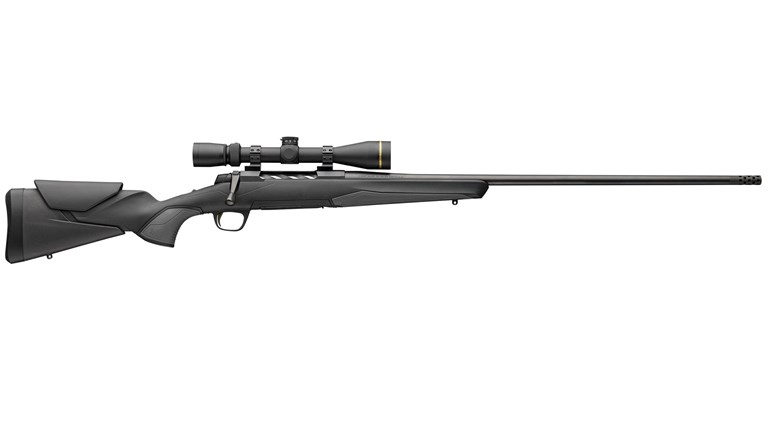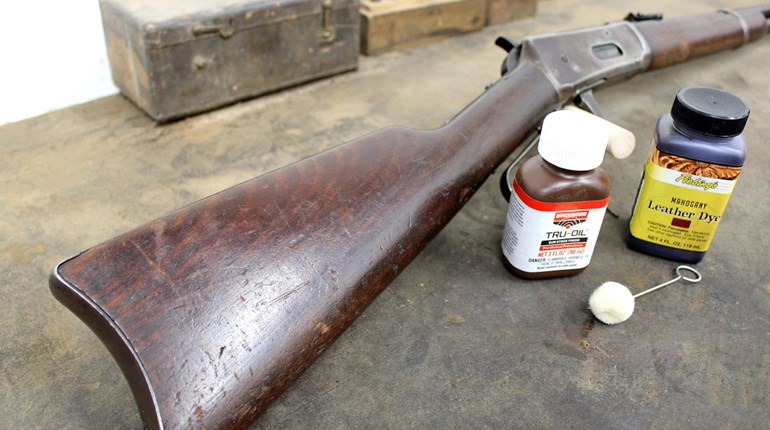
Ask people what they know about the Alamo, and they’ll probably tell you that’s where some Texans died while taking a stand against the Mexican army. Then ask them to name some of those Texans, and they’ll probably give at least one name: Davy Crockett.
But that is a misnomer—Crockett was not a Texan. He had been in Texas less than three months when he was killed at the Alamo in San Antonio at age 49.
Instead, Crockett was from Tennessee—and was a Tennessean born and raised.

To call him a Texan is to completely ignore the eventful life he had led in Tennessee, his beloved home. Incidentally, Crockett is not the only historical figure from Tennessee that Texas has claimed as its own. Sam Houston, perhaps the biggest figure in Texas history—so big that Texas named its biggest city after him—was also from Tennessee. In fact, Houston was a governor of Tennessee before he moved to Texas.
Born in 1786 near Limestone, Tenn., Crockett ran away from home at age 13 to escape an unhappy childhood with a draconian father, and trekked as far north as Baltimore, returning almost three years later, having sustained himself on odd jobs and the kindness of strangers.
He took to hunting at an early age, as did many boys living in what was then the American frontier—the Tennessee woods—and soon everyone noticed his precocious skills in marksmanship. As a young man, he often attended, competed in and won shooting matches, earning much-needed cash or other prizes.
So it was no surprise that during the War of 1812, when many Native American tribes allied with the British were attacking frontier settlers, Crockett enlisted as a Tennessee volunteer in the so-called Creek Wars fought by the army headed by Andrew Jackson. When his wife objected, Crockett explained to her, as he later wrote in his autobiography, “If every man would wait till his wife got willing for him to go to war, there would be no fighting done, until we would all be killed in our own houses.”
As an enlistee in his 20s, he was almost more valuable as a hunter than as a soldier, for Jackson’s army had meager rations and often had to find food on the march. Crockett said, “As the army marched, I hunted every day, and would kill every hawk, bird, and squirrel that I could find.”
After the war, having marched through what is now Alabama, he returned to Tennessee. Nevertheless, Crockett remained peripatetic all his life, moving every few years from one area of Tennessee to another. After his wife died, making him a widower with three children, he sought and found another wife (a widow who already had two children), and sired three more children with her. He was often in debt (a fact not helped by his social drinking), and many of his moves were to seek a fresh start in life. When the family larder ran low, he took to the woods and swamps to find game, often hiking far to explore new hunting grounds. Along the way, he contracted malaria, which rendered him unconscious for several days, nearly killing him, yet he rebounded.

Despite the vicissitudes of frontier life and very little education, Crockett pulled up himself by his bootstraps. He ran for election, winning a seat in the Tennessee legislature, and eventually even won a seat in Congress. His backwoods manners and semiliterate locutions amused some members of Congress in Washington, and in return Crockett thought they talked too much and did little.
Apparently, Washington’s politicians talking a lot and doing nothing are a timeless phenomenon, because even in the 1830s, Congressman Crockett complained, “Many men seem to be proud they can say so much about nothing.”
Physically, Crockett cut an impressive figure. A contemporary described him as “stout and muscular, about six feet in height, and weighing 180 to 200 pounds.”
Despite his colorful life, there was only one major passion in his life—hunting. He is particularly known for his hunts in the area that now comprises Reelfoot Lake and the Obion River in northwestern Tennessee. The lake itself has a colorful history—it was created by an enormous earthquake in 1812, a quake so strong that it caused the mighty Mississippi River to reverse its flow and run backward for several hours!

It was called the New Madrid earthquake, since its epicenter was near New Madrid, Mo., across the river from Tennessee. It was one of the strongest quakes the world had yet seen, its tremors being felt as far north as New York.
A contemporary described him as “stout and muscular, about six feet in height, and weighing 180 to 200 pounds.”
Crockett first saw this area almost 10 years afterward. Despite the quake, Crockett said, “It was a complete wilderness … Game was plenty of almost every kind, which suited me exactly, as I was always fond of hunting.”
Crockett hunted all sorts of game, from turkeys to deer, feral hogs and elk. But what he loved to hunt most was bear. One such hunt occurred in the winter of 1822–1823, in icy weather, in thick bushes along the South Fork of the Obion. At first, he ran into some turkeys; never one to miss an opportunity, he killed two gobblers “of the biggest sort.” Then there was a series of false alarms by his dogs, frustrating Crockett, since he had to trudge through the sleety and icy weather after them. But they finally led him to a big black bear, which he described, in typical hunter style, as “about the biggest bear that ever was seen in America.” (He almost always hunted bear with dogs, and preferred mixed breeds to purebreds.)
The dogs drove the bear up an oak tree, and Crockett crawled to within 80 yards of the tree, until the big bear’s breast was in Crockett’s clear line of sight. He described what happened next, using his trademark backwoods parlance and sense of humor.
“I put fresh priming in my gun, and fired at him. At this he raised one of his paws and snorted loudly. I loaded again as quick as I could, and fired as near the same place in his breast as possible. At the crack of my gun here he came tumbling down; and the moment he touched the ground, I heard one of my best dogs cry out. I took my tomahawk in one hand, and my big butcher-knife in the other, and run up within four or five paces of him, at which he let my dog go, and fixed his eyes on me. I got back in all sorts of a hurry, for I know’d [sic] if he got hold of me, he would hug me altogether too close for comfort. I went to my gun and hastily loaded her again, and shot him the third time, which killed him good.”

Having thus avoided a bear hug, Crockett went home and returned to his kill with two men and four horses. The bear was big. He estimated it weighed 600 pounds, then added a caveat: “It was the second largest I ever saw. I killed one, a few years after, that weighed six hundred and seventeen pounds.” The precision in the latter number indicates he actually weighed that animal.
During his time, the west Tennessee woods were teeming with bears. In the spring of one year, as bears started coming out of hibernation, Crockett killed 47 in about a month, which brought his total take to 105 bears within a 12-month period.
Today, the farthest we have to go for food is the nearest grocery store. In his time, living on the frontier, you either grew your own food or killed it. The black bear, for instance, provided not only coveted meat but its fat was used as oil in cooking, in lamps that lit homes and in various medicinal remedies. And its skin was used in clothing and bedding. Even its bladder was used as a waterproof pouch—they had no Ziploc bags back then.
For the most part, Crockett was a subsistence hunter, and his autobiography indicates how happy he was when he brought home the meat to feed his large family: “I had the pleasure to know that we now had plenty … and I continued through the winter to supply my family abundantly with bear-meat and venison from the woods.”
Nevertheless, Crockett and other frontiersmen have today become subjects for criticism based on political correctness. For instance, during the Creek Wars, he and his fellow men killed Native Americans. But one must view such actions through the perspective of that time—not ours. The primitive behavior of Native Americans, which often involved scalping white settlers, posed a dreadful threat. Simply put, we have no business judging people who lived two centuries ago, for we neither can nor will we ever fully understand their experience.
However, Crockett was more sympathetic to human suffering than were many of his contemporaries. For instance, he was the only legislator from Tennessee to vote against the Indian Removal Act (1830), a measure that eventually enabled the U.S. government to relocate Native American tribes living east of the Mississippi to lands west of the Mississippi. Crockett said, “I believed it was a wicked, unjust measure.” He never regretted his opposing vote.
Given his legendary hunts, a natural question is whether any of his firearms have survived. Indeed, there are firearms traceable to Crockett that have survived and are open to public viewing. Among them is a flintlock rifle that Crockett left with his son before leaving for the Alamo. It is currently housed at the Alamo, which also claims to have a rifle that was reportedly traded by Crockett while he was on his way to Texas from Tennessee. But perhaps the most impressive Crockett rifle is the one at the Museum of East Tennessee History in Knoxville. It is Crockett’s first rifle, made circa 1803. A .48-caliber flintlock, it has a 44-inch barrel. Though it has had some restorative work, it is believed to be mostly original and is a compelling example of a Pennsylvania long rifle.

Crockett’s explorative itch eventually took him to Texas and to the Alamo—the defense of which will undoubtedly remain his most famous action. (Incidentally, even President Trump, in the State of the Union address in February, mentioned the Alamo and Crockett. Though the president deserves plaudits for recognizing a frontier hero, his melding of Crockett with the Alamo also amplified Crockett’s meager connection to Texas and ignored his deep-seated Tennessee roots.
Crockett was already a folk hero even before his death at the Alamo. When he published his autobiography in 1834, he became what we today would call a media celebrity. Newspapers couldn’t publish enough Crockett interviews. But his death at the Alamo mythologized him in myriad ways. In the American pantheon of frontiersmen, only Daniel Boone surpasses Crockett, partly because Boone preceded Crockett. But as a national folk hero, Crockett has no equal—and certainly no superior.
By the way, he almost never wrote his name as “Davy.” It was David. He did wear the legendary coonskin cap, which has become inseparable from his public image.
In his autobiography, he repeated some advice he had previously given others: “Be always sure you’re right—then go ahead.” It became his trademark maxim. After all, it is excellent advice not just in hunting, but in any other activity as well.





































